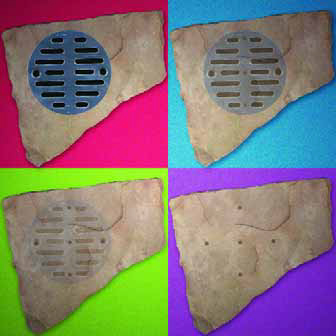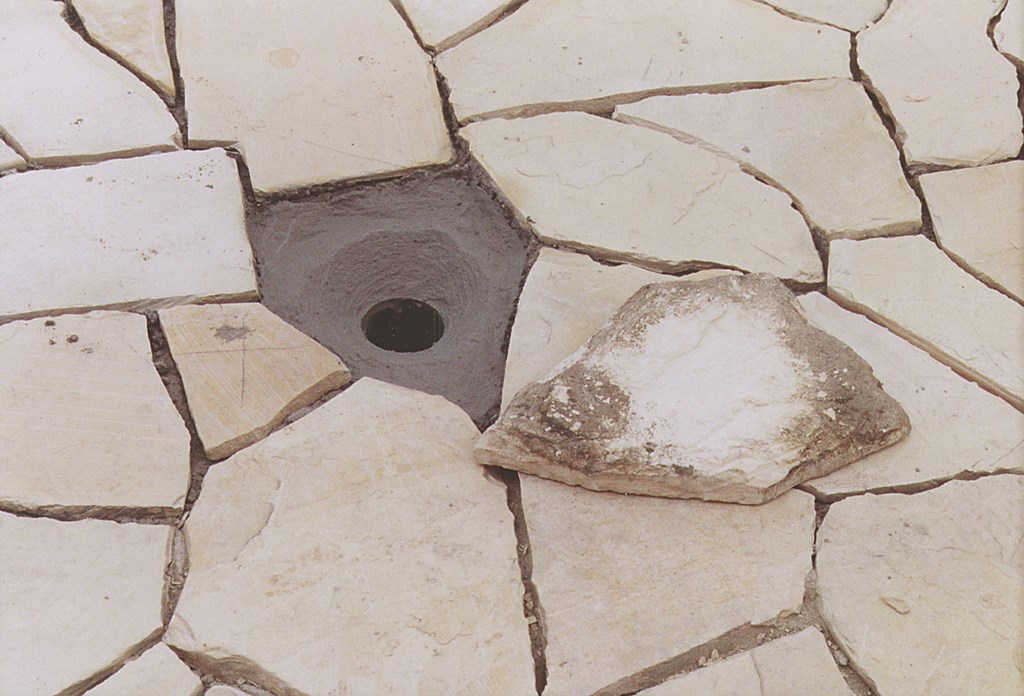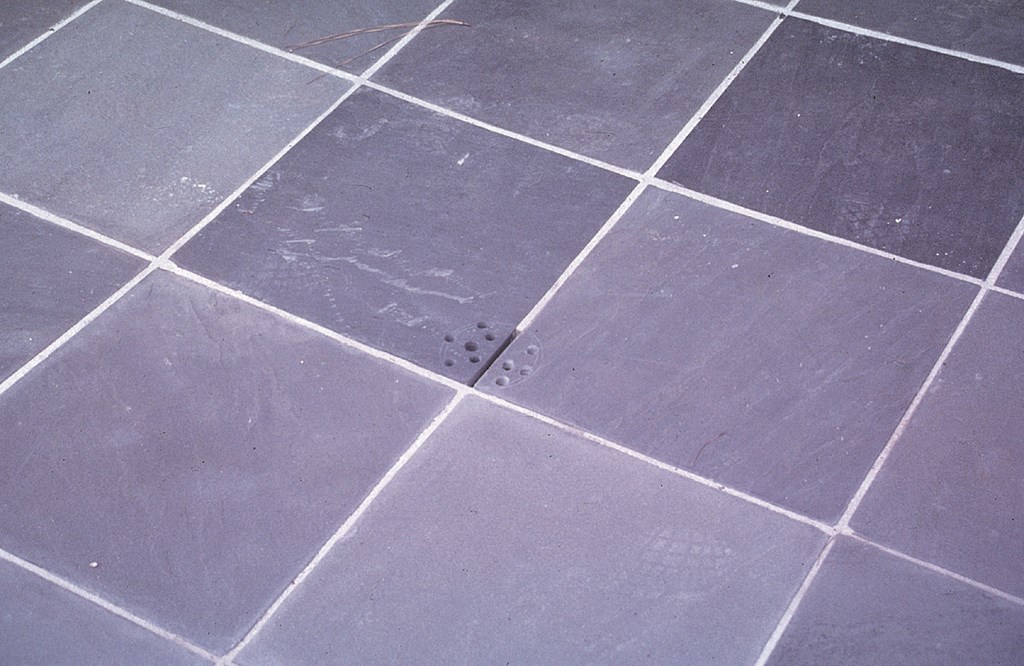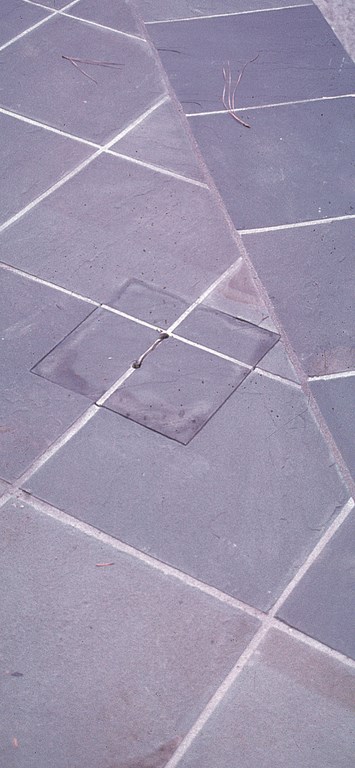Drains with a Difference

You’d think that having lousy-looking deck drains was inescapable, given that about 99.9% of them look like a thing you’d find in your shower.
Whether you’re using PVC or brass grates, they disrupt the surface of any decking material and to my way of thinking are an unnecessary eyesore – nearly criminal when they interrupt the look and texture of a beautiful expanse of stone. It just doesn’t make any sense to draw that much attention to the drains.
That’s why I decided to develop a deck-drain detail that doesn’t break up the visual lines of the deck. It’s extremely simple – and it’s something you can use in place of intrusive skimmer lids as well.
In a nutshell, the idea is to drill holes in a piece of decking material to create a removable drain grate that blends in with the rest of the stones on the deck. As with any drain, of course, the key to success is proper grading and drain placement. If the surface of the deck directs the water toward the drain, you won’t have any problems.
DOWN TO DETAILS
I start by stubbing up with either 4- or 6-inch plumbing. The number of stubs I use is determined by the width and length of the deck: Too few or too many create a roller-coaster effect with the deck surface, while the proper number gives a visually level deck.
When we pour the concrete sub-base, a cone-shaped area is gouged out of wet concrete, creating a funnel effect toward the drain line. (Figure 1). The idea here is that the water is to be collected over a wide area, approximately 12 inches across. I use three coats of Thoroseal to seal the funnel and Waterplug (which adheres to PVC – something the Thoroseal cannot do) to seal the interface with the plumbing.
When the deck goes in, we select a strategic piece of stone and leave a space for it. We bore 1/8-inch pilot holes using a stone masonry bit, then enlarge the holes to 3/4 or 5/8 inch – six or eight holes in all.
To blend the grate stone in with the rest of the deck, we grout against the stationary stones but leave about a 1/4-inch gap around the moveable stone. As water flows toward the drain, some of it flows into this perimeter space while the rest falls through the holes. (If the drain lines should become clogged, there’s a clean out in a perimeter location.)
Once this work is finished, the stone rests on the sub-base and is only occasionally lifted for cleaning by a service technician or the homeowner. As mentioned above, this same treatment can be used for skimmer lids – the only added step being to make sure you line up the grout lines over the top of the skimmer.
This detail is expensive – as much as ten times as costly the best PVC or brass drain heads – so this isn’t a detail for low-end projects. But for quality work with beautiful stone decking, I won’t accept anything else.
I believe it’s time pool builders take a look at their work and decide if they are truly building quality – with quality details such as this one – or are just talking about quality and really only building to the norm.
David Tisherman is the principal in two design/construction firms: David Tisherman’s Visuals of Manhattan Beach, Calif., and Liquid Design of Cherry Hill, N.J. He can be reached at [email protected]. He is also an instructor for Artistic Resources & Training (ART); for information on ART’s classes, visit www.theartofwater.com.













